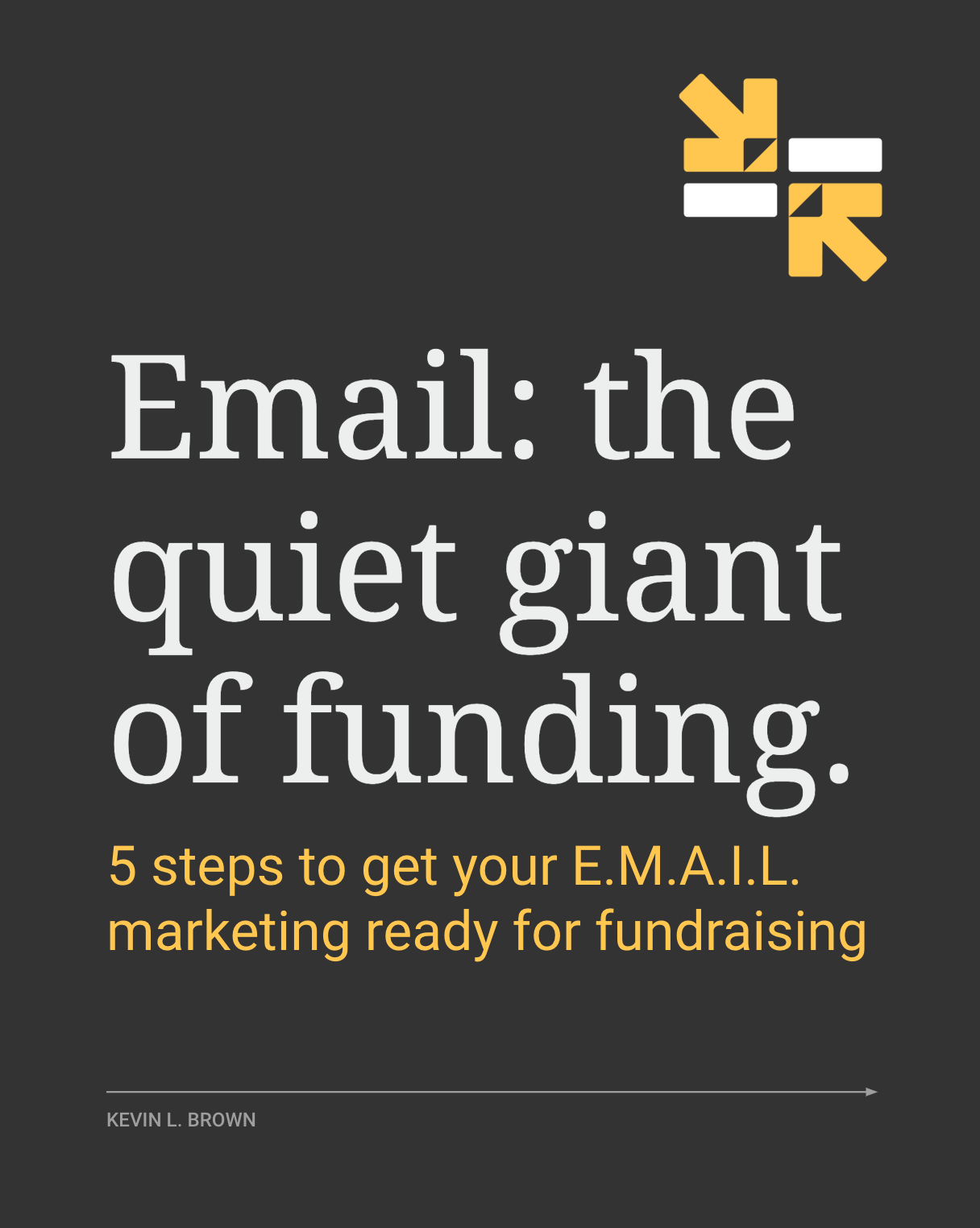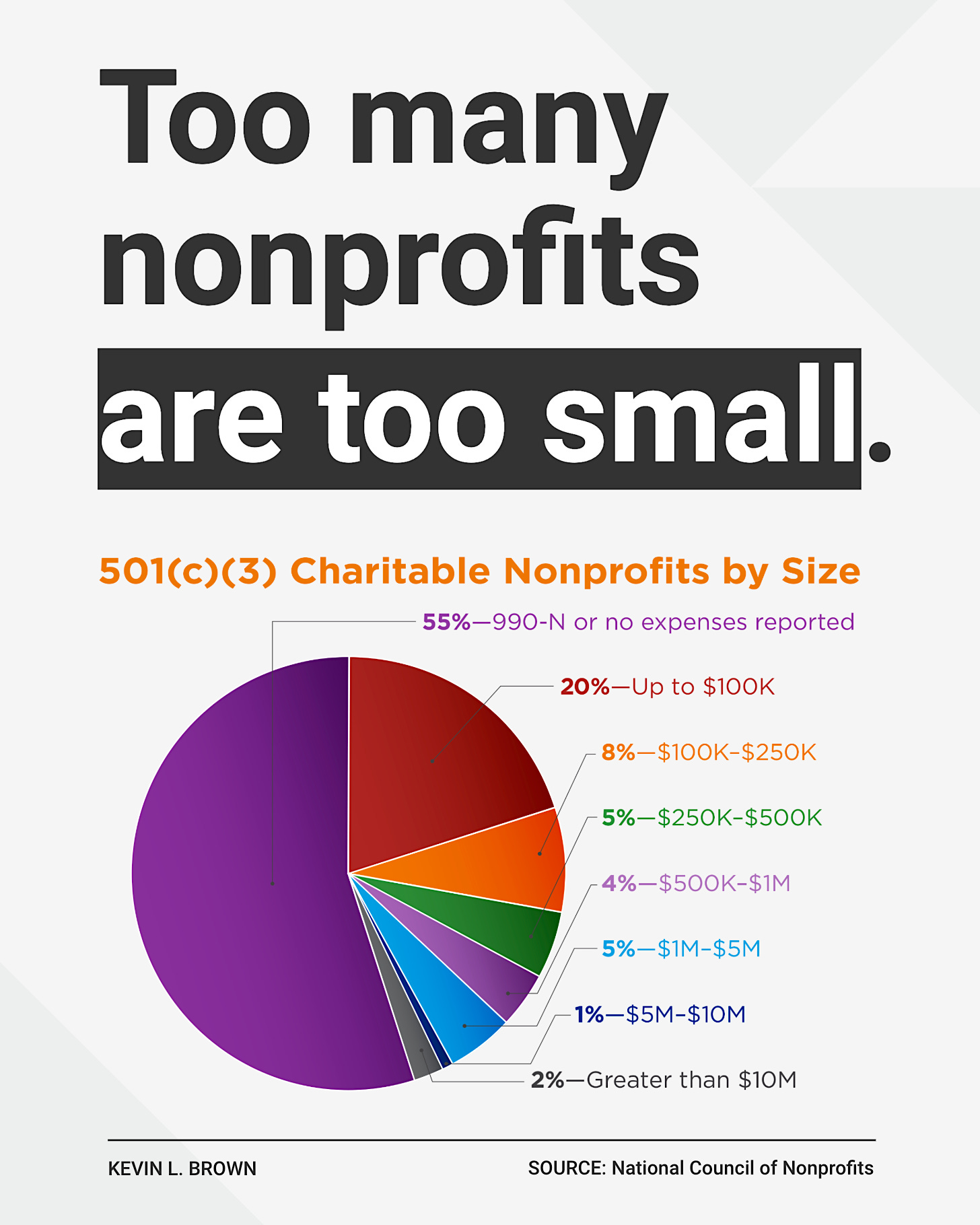Pitch outcomes, prioritize E.M.A.I.L. & be fundable/findable.
Three weekly insights to get funding
Happy Friday
Whether you’re deep into end-of-year fundraising or you’ve already started 2025 planning, I hope these three funding insights are helpful.
(At Mighty Ally, we’re all shutting down for the holiday soon. But you’ll still get a newsletter from me next Friday.)
As always, don’t forget about the weekly bonus and P.S. at the end (try not to laugh).
— Kevin
💪🏽💛
Three insights
1. Pitch outcomes, not just outputs.
Saying what you do isn’t enough.
Because:
Features tell, advantages compel, benefits sell. And your fundraising should communicate all three.
Here’s the breakdown. ⤵
🥉 FEATURES
What you do & how the product/program works.
🥈 ADVANTAGES
How the features or outputs help communities.
🥇 BENEFITS
The outcome or impact that results.
See?
This art of messaging all three levels — called brand laddering — can be game-changing for your communications.
Just like the Lego ad pictured.
Yes, value proposition laddering works for nonprofit brands too.
👓 Like an eye care NGO:
FEATURE — free eyeglasses for kids
ADVANTAGE — students with improved sight
BENEFIT — more learning outcomes in school
Outcomes over outputs.
Tell, compel, sell.
It’s that simple.
2. Email: the quiet giant of funding.
Email marketing earns $36 per $1 spent.
↳ Social media can’t come close.
↳ Paid ads don’t come close.
↳ Direct mail isn’t close.
Email marketing return-on-investment is higher than any other nonprofit communications channel.
Why this matters:
You might be letting sexier tactics steal precious comms resources from what’s tried and true. Four billion people use email every day — more than half of humanity, still growing, and roughly the same number as social media.
Click here for a 2-minute guide with five steps:
Evaluate
Migrate
Assemble
Implement
Learn
Boost your email.
Boost your fundraising.
3. Too many nonprofits are too small.
Grassroots nonprofit leaders: you are not alone.
The fundraising struggle is real.
Half of you walk the hand-to-mouth tightrope with just one month of cash reserves. Even in the United States — where foundations have $1.5 trillion in the bank — 88% of nonprofits operate on less than $500,000 annually.
What’s the fix?
There’s no one-size-fits-all solution to this stunted growth phenomenon. Because there are countless deep-rooted dynamics and historical inequities at play.
But to break the nonprofit starvation cycle, I know one thing to be true. ⤵
You can’t simply crank out more grant applications or fundraising campaigns in frustration — expecting more donations to come.
Tackle the problem differently.
↳ To get funding, be fundable and findable.
💰 BE FUNDABLE
Show donors why you exist, what you do, where you’re going, who will do it, how to get there, and when it will be done.
That’s your theory of change and strategic plan (your brand).
🔍 BE FINDABLE
Occupy a distinct space in the minds of your ideal funders, plus routinely communicate your brand promises.
That’s your positioning strategy and marketing communications (your brand).
Don’t get me wrong:
Not every nonprofit wants or needs to get big. However, too few of you are in complete control of your nonprofit’s financial future. And too many of you are too tired.
So let’s get more of you to $5 million, $15 million, even $50 million in size.
Be fundable.
Be findable.
Be unstoppable.
The weekly bonus
Even after all the talk and all the years, only 20% (roughly) of nonprofit funding is unrestricted.
But according to this great piece in Stanford Social Innovation Review — The Rise of Trust-Based Philanthropy — “funders are embracing a more equitable way of working with nonprofits by prioritizing collaboration and trust.”
Need my help?
If this advice is useful — but you’re ready to get even more fundable and findable — check out Brand Bootcamp.
It’s our self-paced, online course to maximize your funding. In just 15 minutes a day.
P.S.
End of year, tired, we all look about like this.





